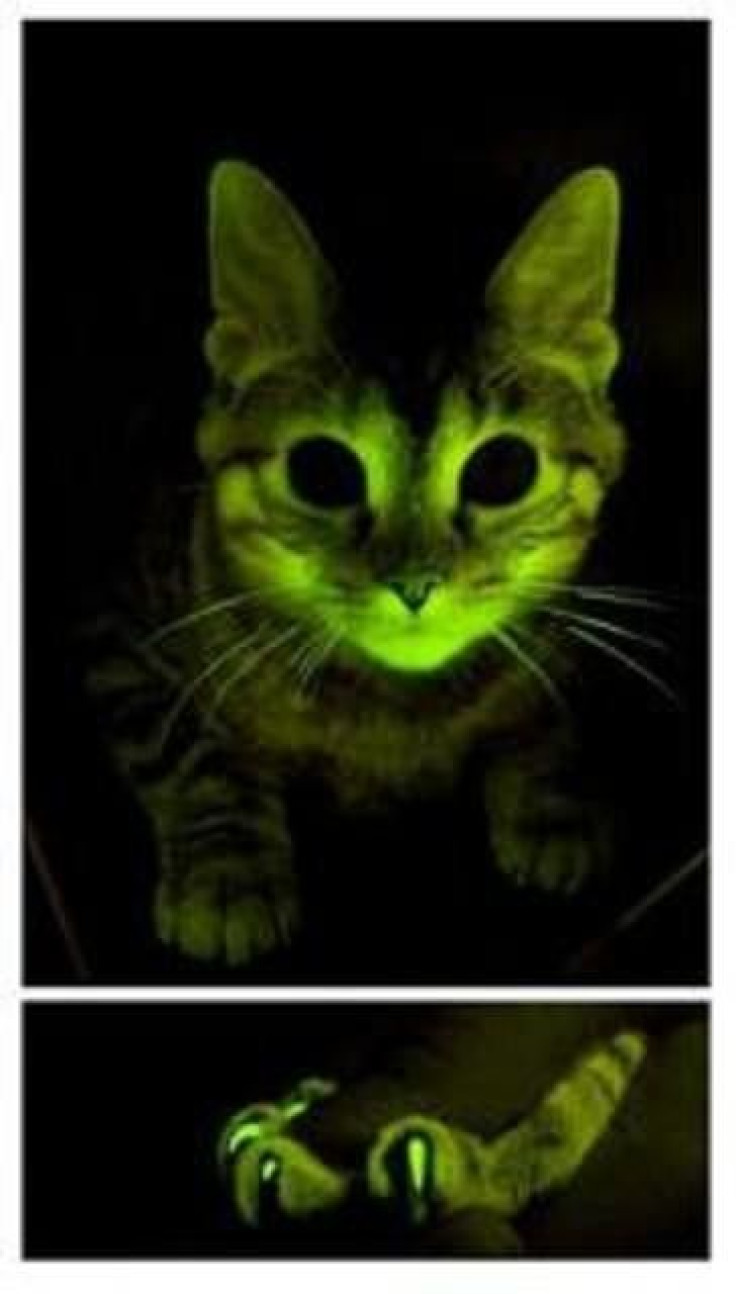U.S. Scientists Create Green-Glowing Cats That May Resist AIDS

Scientists have developed genetically modified cats that emit a green glow and have cells that fight the virus which causes feline AIDS.
Scientists modified the DNA of domestic cats by inserting monkey genes that block the virus in feline eggs, or oocytes, before they are fertilized. Scientists also inserted genes from a fluorescent jelly fish that make the modified cells glow an eerie green color - making the altered genes easy to spot.
The purpose of the study was to show how a natural protein that prevents macaque monkeys developing AIDS can do the same in cats.
The jellyfish genes are used to track the monkey genes for the protein. Shining a UV light on the cats produced a green glow, confirming that the protein was being made in their tissues and that the technique had worked, reports the Daily Mail.
Tests on cells taken from the cats show they are resistant to feline immunodeficiency virus, or FIV, which causes AIDS in cats.
This provides the unprecedented capability to study the effects of giving AIDS-protection genes into an AIDS-vulnerable animal, said Dr. Eric Poeschla of the Mayo Clinic in Rochester, Minn., who led the study.
Poeschla believes that the research would not only benefit feline health but would also be advantageous for human health and advance AIDS research in people.
Proteins called restriction factors that normally fight off viral infections in humans and cats are helpless against HIV and FIV. But macaque monkeys possess restriction factor proteins that can stop the viruses invading immune cells.
Scientists took the monkey gene for the restriction factor, TRIMCyp, and inserted it into cats to prevent cells from being infected by the virus.
Mayo Clinic scientists used harmless viruses to transfer genes into eggs removed from pet cats during routine spaying.
In order to keep a track of the monkey gene, scientists also inserted a green fluorescent protein gene from the jellyfish Aequorea victoria that makes them glow green. The eggs were then fertilized through IVF and implanted in surrogate mothers.
From 22 implantations, Poeschla achieved 12 fetuses in five pregnancies, and three live births. Nearly all the offspring from the modified eggs have the restriction factor genes, and defense proteins are manufactured throughout the cat's body.
Two of the original green-glowing cats went on to have kittens of their own, all of which carried the new genes.
While researchers have demonstrated that lab cultures of white blood cells from the cats are protected from FIV, they hope to expose the cats to the virus to confirm that they are immune to it.
The study was published on Sunday in the journal Nature Methods.
© Copyright IBTimes 2024. All rights reserved.











